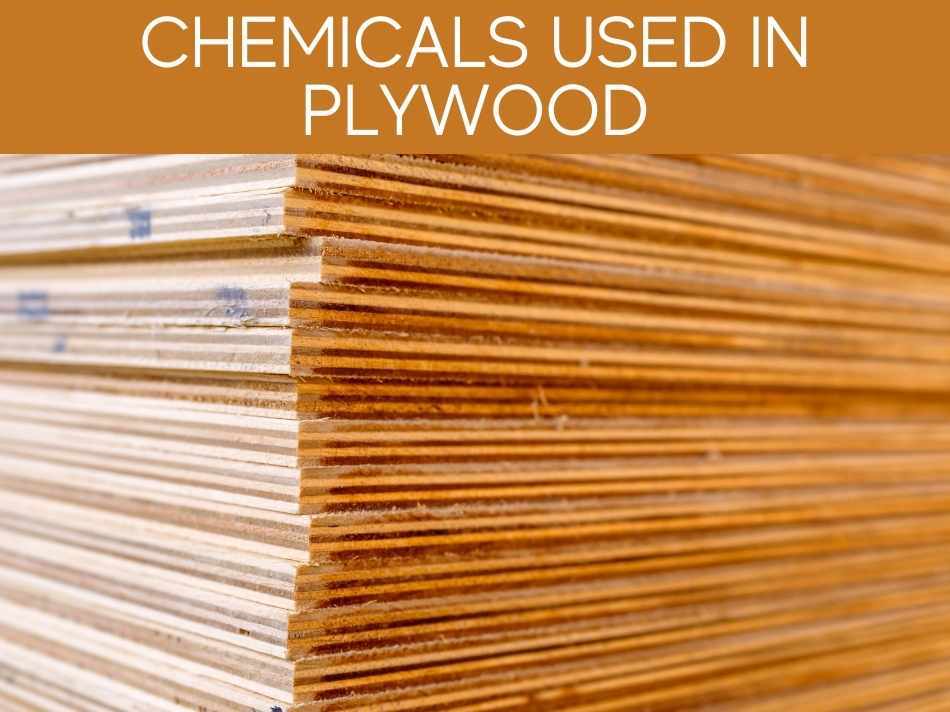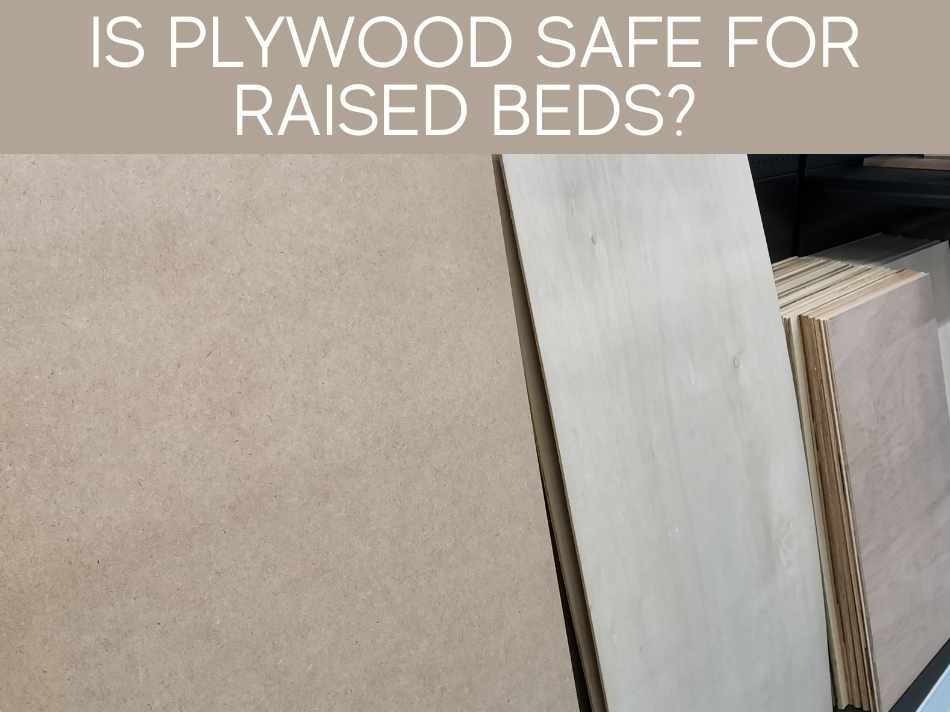You’re planning on building some raised garden beds, and are thinking of using some plywood to build them. Maybe you’ve got some extra or scrap plywood laying around. But is plywood safe for raised beds? And how long will plywood last?
Research has shown that chemicals used in plywood–including formaldehyde adhesives & copper azole–can leach into soil and into vegetables in raised beds. Also, plywood may only last 1-2 years before breaking down. Better & safer materials for raised beds include douglas fir, stone, & brick.
Let’s dive into why plywood isn’t the safest or most durable choice for raised garden beds.
table of contents Plywood Safety Concerns for Raised BedsChemicals used in plywoodIs Plywood Safe for Raised Beds?More Downsides to Using Plywood for Raised BedsBetter alternatives to plywood for raised bedsCreating a Raised Bed With PlywoodConsider Whether Treated or Untreated Is BestThink About the BottomMake the Bed TallerDrill to Get the DrainageOther Materials to Use for Your Raised BedsRedwood or CedarRockUntreated WoodCement and BrickConclusion
Plywood Safety Concerns for Raised Beds

For building raised garden beds, you’ve got a variety of materials to choose from: wood, stone, concrete, metal, etc.
But for plywood, you’ll want to consider safety–especially if you’re going to grow vegetables & fruits in your raised beds. The last thing you want is to grow your own food, only to realize that dangerous chemicals have leached into your soil & contaminated your food.
Chemicals used in plywood

Plywood, like other lumber products, might contain chemicals that help preserve the wood and make it last longer. Pressure-treated lumber falls into this category (the quick verdict: DO NOT use pressure-treated lumber for raised beds in which you grow food).
Until 2004, lumber was often treated with a chemical cocktail called CCA (i.e., chromated copper arsenate). Yeah, just like it sounds, you definitely do NOT want to use wood with CCA in your garden–especially a vegetable garden.
Although CCA is still used for commercial lumber (for example, utility poles), 4 different chemical treatments are now used in lumber:
- ACQ (alkaline copper quaternary)
- CA (copper azole)
- Copper-HDO
- Copper naphthenate
For plywood specifically, adhesives & glues are used for binding the layers together. Now, each plywood producer uses their own formulation of adhesives in their products. Typically, the adhesives used in plywood, particle board, and other composite wood panels are urea-formaldehyde based.
Formaldehyde? Yep, formaldehyde.
If you haven’t heard of formaldehyde, surely you’ve heard of cancer–which is one of the possible health issues that formaldehyde can cause.
Is Plywood Safe for Raised Beds?

OK, so, for the chemical treatments listed above, research has shown that some compounds can migrate into soil and into plants in raised beds.
Like most things in life, there are degrees of uncertainty. Sure, you could make a raised bed from plywood, but given the research-based evidence, for raised beds where you grow veggies & fruits, plywood is probably not safe.
At this point, you might be thinking: Can’t I just buy some plain old freaking wood?!
And, yes, that’s basically my perspective–especially for raised beds where I’m growing food. Especially when there are other inexpensive AND safer alternatives to plywood for building raised garden beds.
More Downsides to Using Plywood for Raised Beds

Aside from the research showing that plywood’s chemicals can leach into soil & make their way into your food, plywood isn’t designed for outdoor weather. Plywood will often start to break apart and need replacing very quickly after you design the raised bed.
For example, once plywood begins absorbing moisture, you’ll often notice that it’s layers become warped and begin to separate.
Most gardeners are lucky to get their plywood bed to last for more than 1 or 2 years. You’ll constantly need to replace different parts of the bed to make this work.
Better alternatives to plywood for raised beds

OK, so the good news is that there are better alternatives to plywood–even if you want to use wood for your raised beds.
A great alternative to plywood for raised beds is douglas fir. Douglas fir for raised beds:
- is widely available,
- inexpensive,
- has some natural rot resistance,
- and typically lasts 5-7 years for raised beds.
Otherwise, there are a number of other naturally decay-resistant wood species such as:
- black locust,
- black walnut,
- cypress,
- Osage orange,
- red cedar,
- redwood,
- white oak.
Some of those wood species–especially the hardwoods–are going to be more expensive, sometimes 2-5 times as much as douglas fir. However, the upside is that they can remain rot-resistant in the soil for over 25 years.
If you’re a super nerd like me, you can also check out this worldwide wood species durability list–just in case you’re curious about how long an untreated raised bed made of scribbly gum wood might last (apparently, not long). Never heard of scribbly gum wood? Well, neither had I.
Creating a Raised Bed With Plywood

OK, so after all that, if you’re really hell-bent on making a raised bed from plywood, here’s how. But please–for your own sake–don’t grow any food in that raised bed. Maybe just some wildflowers or ornamentals.
Consider Whether Treated or Untreated Is Best
When looking for the right plywood, you should consider whether treated or untreated is best. The treated wood will last longer because it can be near the wet soil without ruining. However, this is often not recommended because it potentially has dangerous chemicals inside.
Untreated plywood is safe to use on your garden bed, so it is the best option. you’ll need to replace it every few years, but you’ll not need to worry about the toxic chemicals getting into your garden. If you go with the treated plywood, it is best to line some thick plastic to help keep things safe.
Think About the Bottom

The way you build up your garden bed will determine what kind of bottom you need to work with. If you make a typical bed, you can easily pick the size you want and put it on raised legs. This helps with drainage and ensures that the woods stay as far from the plants as possible.
However, sometimes it is easier to leave the bed on the ground. If you do this, make the frame onto the ground and add some bedrock or another similar mixture to help drainage around everything.
Make the Bed Taller
It is always best to make the bed for your garden a little taller if possible. Two feet deep is the traditional height, but you can make it a little taller. Or you can add legs underneath to help keep it up and off the ground. The more you raise the bed, the easier it is to reach your plants without bending over or being on your hands and knees.
Drill to Get the Drainage
If you are using plywood just as the beds’ sides, you won’t have to worry about drainage as the water can fall underneath. However, if you add a bottom of some sort, whether it is plywood or another material, you should drill into the bottom to add some drainage. A few holes will often work, but the longer the garden, the more you need proper drainage.
Other Materials to Use for Your Raised Beds

There are a few materials that are better for your raised beds than plywood. The best materials to use include:
Redwood or Cedar
Both of these will provide a nice look to any raised bed garden you have, while also keeping rot, bugs, and any moisture out of the mix. These do break down, similar to what we see with plywood; they will last a whole lot longer assuming you build them upright. Depending on the climate, raised beds made of this material can last ten years or more.
Rock
This can provide a unique look that you may not see in other raised garden beds, which makes it nice to use. If you already have a lot of natural rock nearby or don’t mind searching to get just the right look, then a rock raised bed will work great. It doesn’t need a lot of maintenance, it looks great, and it can last for a very long time. Mortar will be necessary to help keep the rocks in place, though.
Untreated Wood
This type of wood is perfect for giving you a rustic-looking bed for your garden. You do need to remember that they are similar to plywood in that they will break down, though they will last at least three years if you take care of them well. Plus, since you are not spending money on wood treatment, they can be inexpensive to use.
Cement and Brick

This is similar to using rocks, but unless you have a little sitting around, it can be expensive to work with. They will stand for a long time, so you need to weigh the costs to the benefits. Cement blocks are a little cheaper than bricks and can give the same kind of look, sometimes even better if you choose some of the older options.
However, if you’re considering using cement or cinder blocks, there’s the potential for leaching of harmful chemicals into the soil.
Conclusion

Plywood is generally NOT recommended for raised beds in which you’re growing vegetables or fruits. In addition, plywood is typically not designed for outdoor or wet/moist areas, and can break down faster than other naturally rot-resistant woods. Better alternatives include douglas fir, cedar, rock, and brick.
